- Door Parkour
- Posts
- ADAPT L2 course: complete!
ADAPT L2 course: complete!
I can't believe I made it out in one piece!
TL;DR
I’m going to be diving into the whole week of events and you may not be here to read all of that. The short version is:
I learned a lot about coaching and parkour from the 2 tutors and the other coaching students on the course
This week felt like my re-entry into the in-person parkour community, since my only engagement with it for years has been virtual
The prep I did the past 6 months was indeed plenty for me to get the most out of this course
I have a clear direction for my future training — parkour and parkour coaching — that will prepare me to pass the assessment after completing the prerequisite 40 hours of reflective coaching
Now, for the long version 🎉
Day 0 (Monday)
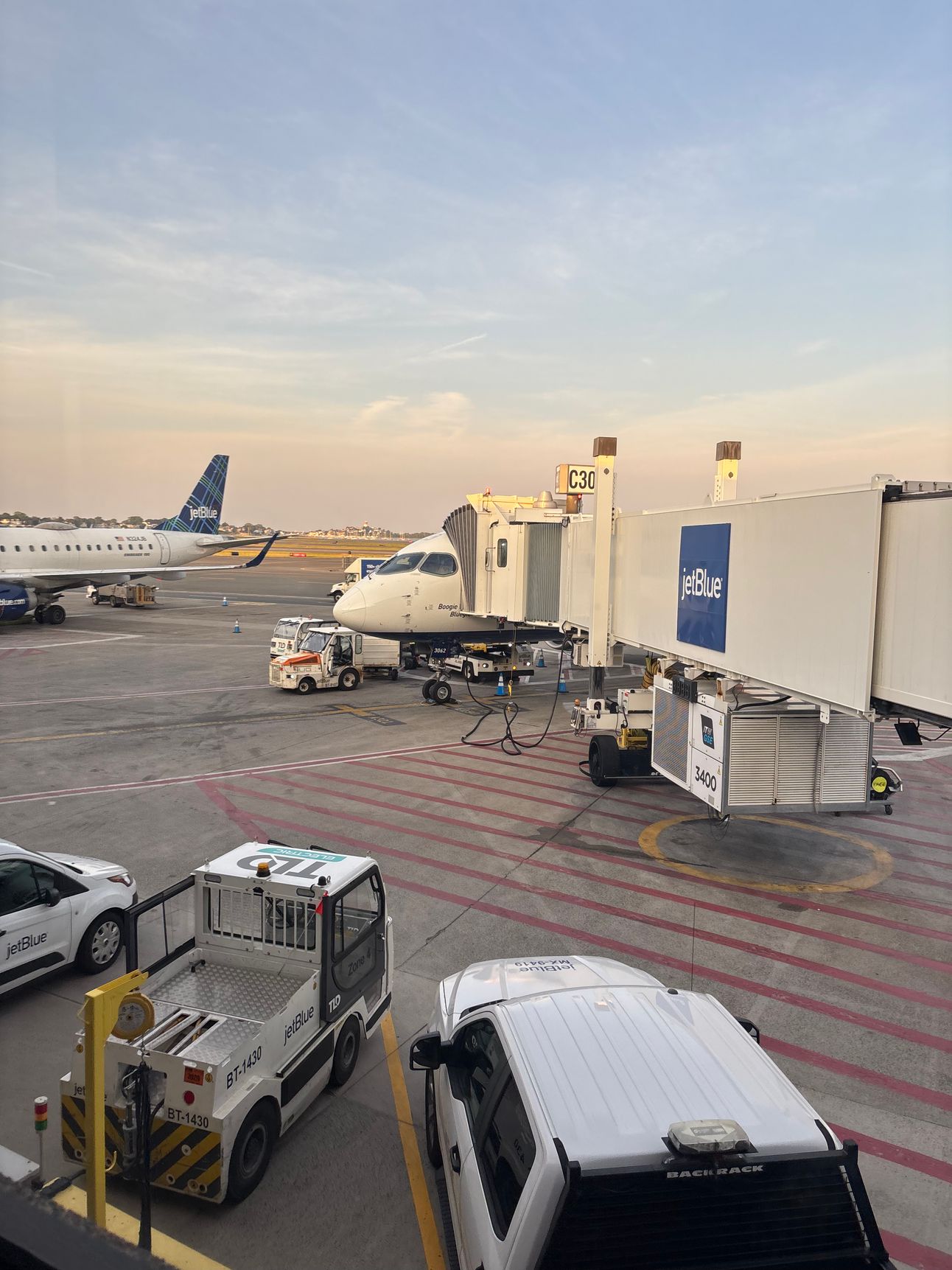
I got to the gate like 2 hours early 😂 I’m very paranoid about being late for a flight
Sitting in the Milwaukee airport, I still had a few things on my mind:
Will my knee be OK? Am I going to injure it again? Am I doing this too soon?
Do I even belong here? I finished my ADAPT L1 cert back in 2015. 10 whole years ago! That’s such a long time to be away from coaching, I hope I don’t make a fool of myself
Is everyone else going to have tons of coaching experience? I hope I’m not the only one who’s completely new to leading my own classes
Did I make enough progress with my strength & conditioning and parkour training? Am I going to be the weakest link?
Am I going to be the only one who’s not in the best shape of their life? The only L2 coaches I know don’t have a belly like I do
Those were my “demons”, and admittedly, they weren’t the ONLY thoughts on my mind, but they were things I revisited a few times as I boarded the flight to Boston, checked into my hotel, and got ready for the next day.
On a happier note, I was also really excited for:
Meeting some new faces in the parkour community
Seeing some familiar faces I hadn’t seen in a while
Training in a group — I’ve been training solo for many years now
Making some new friends
Learning from all the amazing coaches and practitioners who would be there
Finding the support and guidance that would make me feel like I was doing the right thing for me and the community by trying to become a parkour coach
And I can tell you all of those wonderful things happened, and more! ❤️
Filed under the “not-so-wonderful” side of things is the 2-hour detour I took on the way to the hotel. I decided to be “a cool local” and take the free bus from the airport to the Cambria, which was a short walk from the bus stop at a nearby car rental place.
That would have been fine, except it was the wrong Cambria. Not only that, but it no longer existed 🤣 It still had a pin in Apple Maps, but the building at 155 Porter had no hotel signage and was under construction. On the bright side, I did get to see a baseball game and get a nice walk in East Boston Memorial Park 😅
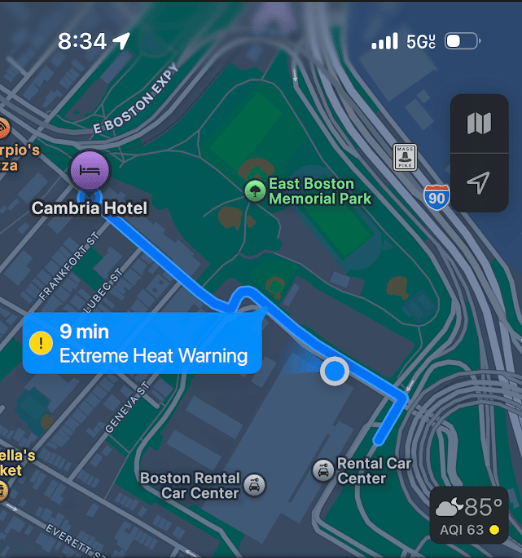
Where I thought the hotel was
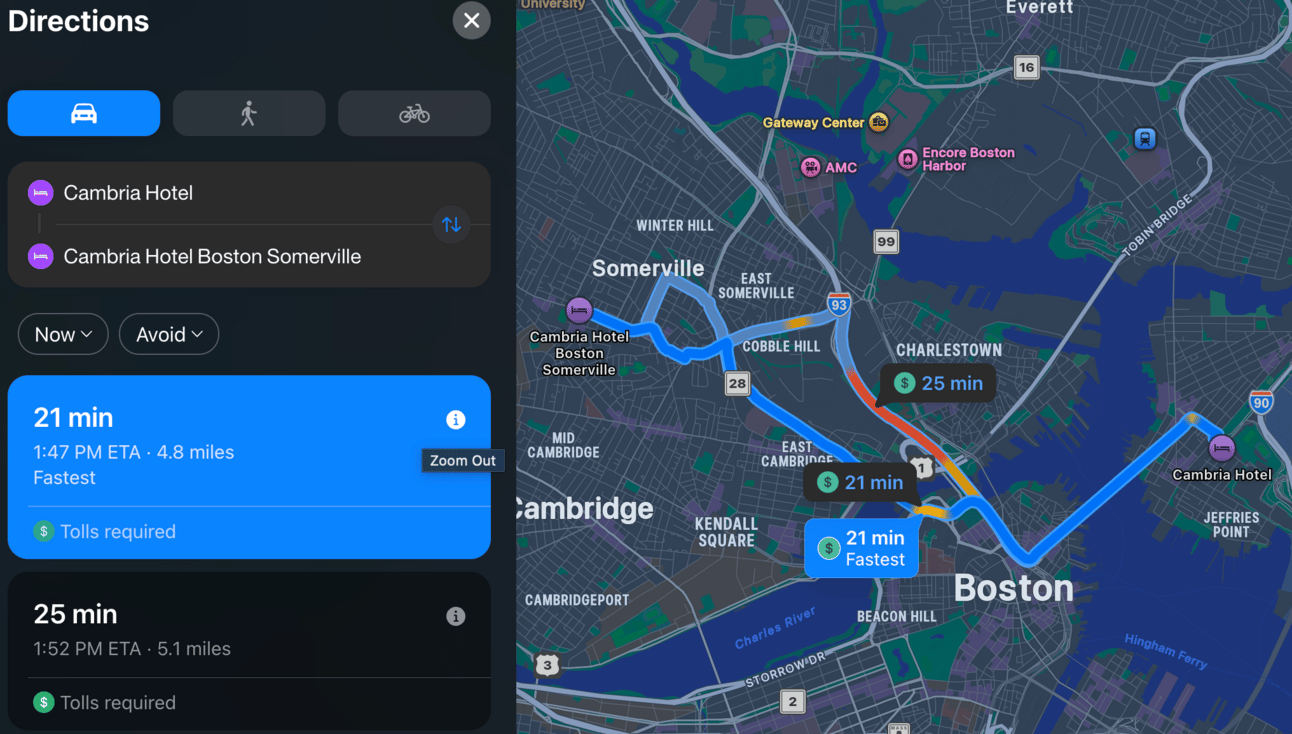
Where it actually was
By the time I was out of the Lyft at the correct Cambria, I was exhausted and fully ready to pass out lol
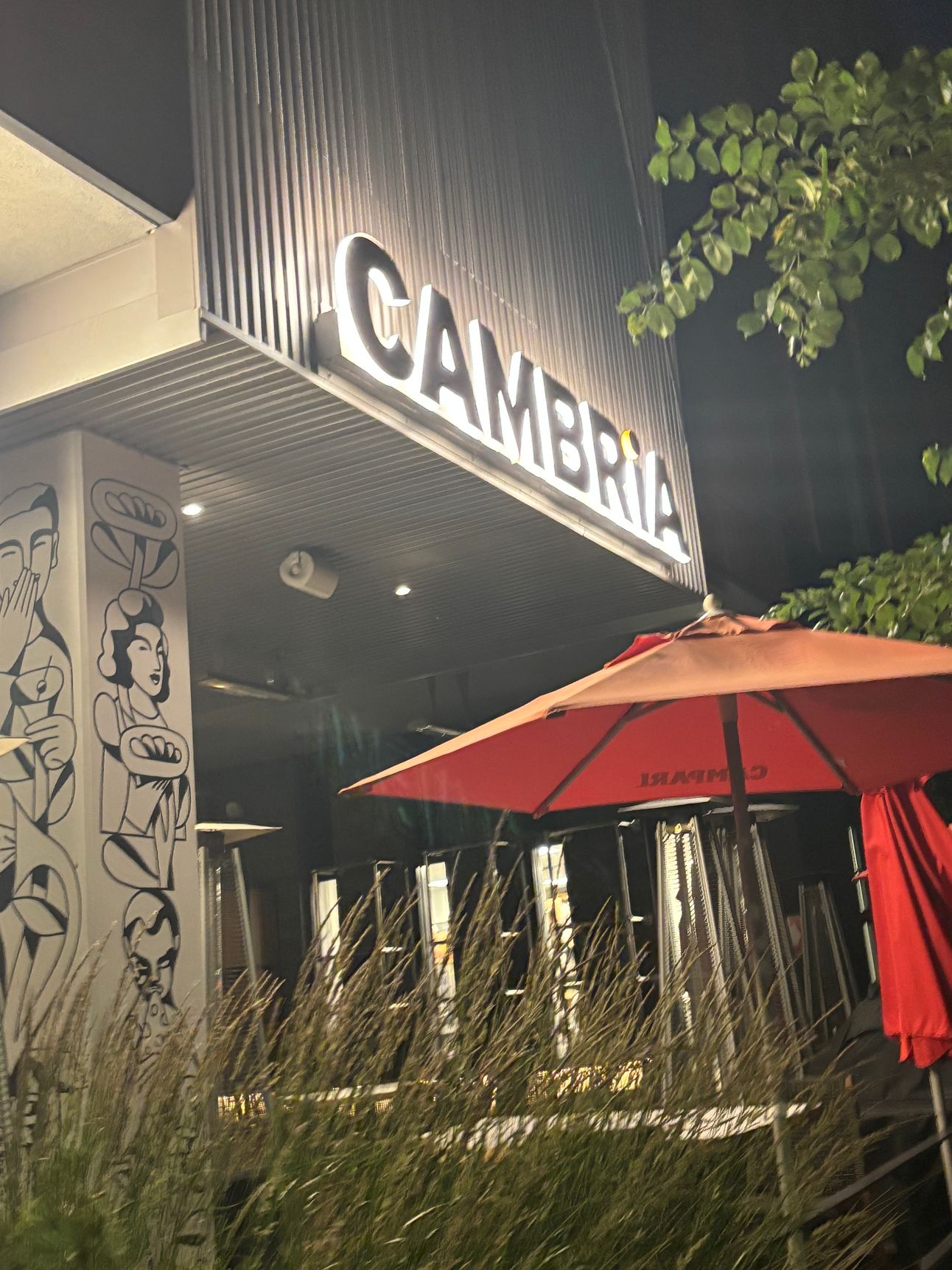
The Cambria was my “home sweet home” for the next 5 days. What a lovely hotel! ❤️
But first, some late-night tendies.
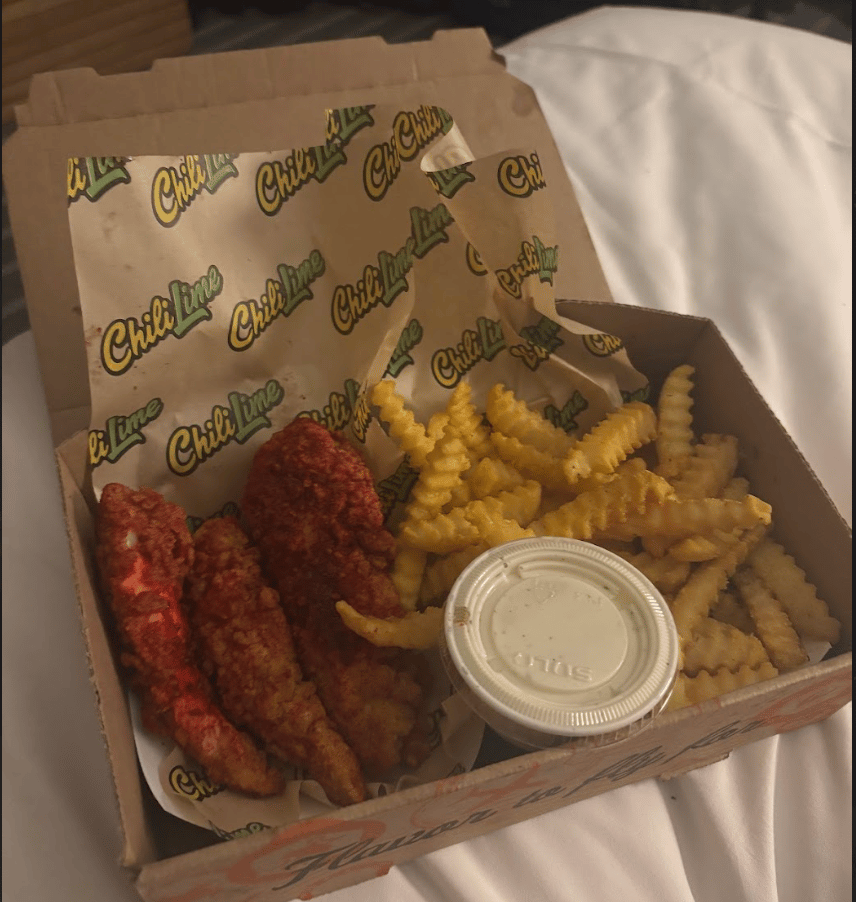
The wings place next door to the hotel was FIRE. They had chili lime seasoning on these 🔥
Day 1 (Tuesday)
I was the first one to arrive at The Dojo, helped in part by the fact that my hotel was directly across the street from it.
I already knew the tutors for the course would be Chris Keighley and Blake Evitt, both of whom I'd met back in 2014 — Chris was one of the co-tutors for my ADAPT L1 course and Blake was one of the three Parkour Generations coaches at the Wisconsin Parkour Jubilee. This time period was indeed so long ago it felt like a past life, and I was surprised either of them remembered me at all. In many ways, I was a different Steven back then.
So the day kicked off with an icebreaker. We all found an obstacle among the metal scaffolding in The Dojo’s backyard that we felt drawn to, and demonstrated a movement to the rest of the students. We explained what it meant to us and why we chose it. I picked a laché-to-cat-climbup because I love how upward movements allow me to reach places that to most people appear “off-limits”. I like to reach places I’m not supposed to be able to reach, at least according to what the average person would consider “possible”.

The move I shared was a step off the lower bar to a laché on the higher bar to a cat hang on the wall with the PKGen spiral logo 🌀
It was great to get to know everyone and some of their quirks on the first day. We were already diving right into physical challenges and group discussions, with opportunities to practice different coaching skills.
We thought about what our individual coaching philosophies were, how to adjust it to meet the needs of our students, and the concept of “embedded learning”, which we would end up revisiting multiple times throughout the week. We also covered how to handle some difficult situations that come up when running a class, among many other topics.
Before I knew it, the day was done. 6pm arrived quickly every single day of the course. It’s not that there wasn’t time to check the clock. I just didn’t care what time it was: I wanted to be there every second of those 5 days, and besides, I was too busy filling my notebook when we weren’t moving, coaching, or eating.
Highlights
Finding out how high off the ground I was willing to do a rail squat
Tearing my callouses during the icebreaker — I wore self-adhering bandages and sports tape on my hands the remainder of the course 🤣
Learning “again, for the first time”, the gibbon swing hand technique
Feeling like I was part of a community again 😍
A quote that really stuck with me was, “Usain Bolt’s coach will never be faster than him.” In other words, a strong athlete does not necessarily make a strong coach.
Being invited to a coach’s birthday dinner at Himalayan Kitchen; also, filling up on momos and playing violin at said dinner 😛 (I was asked to play something because the coach was a violinist and found out I was too, so I whipped out the Lost Woods theme from Legend of Zelda 🍃 )
And I have to say the sports tape was annoying at first, but by the end, it felt like an edgy fashion accessory 😜 (also, my hands didn’t get any worse than this 👇️ )
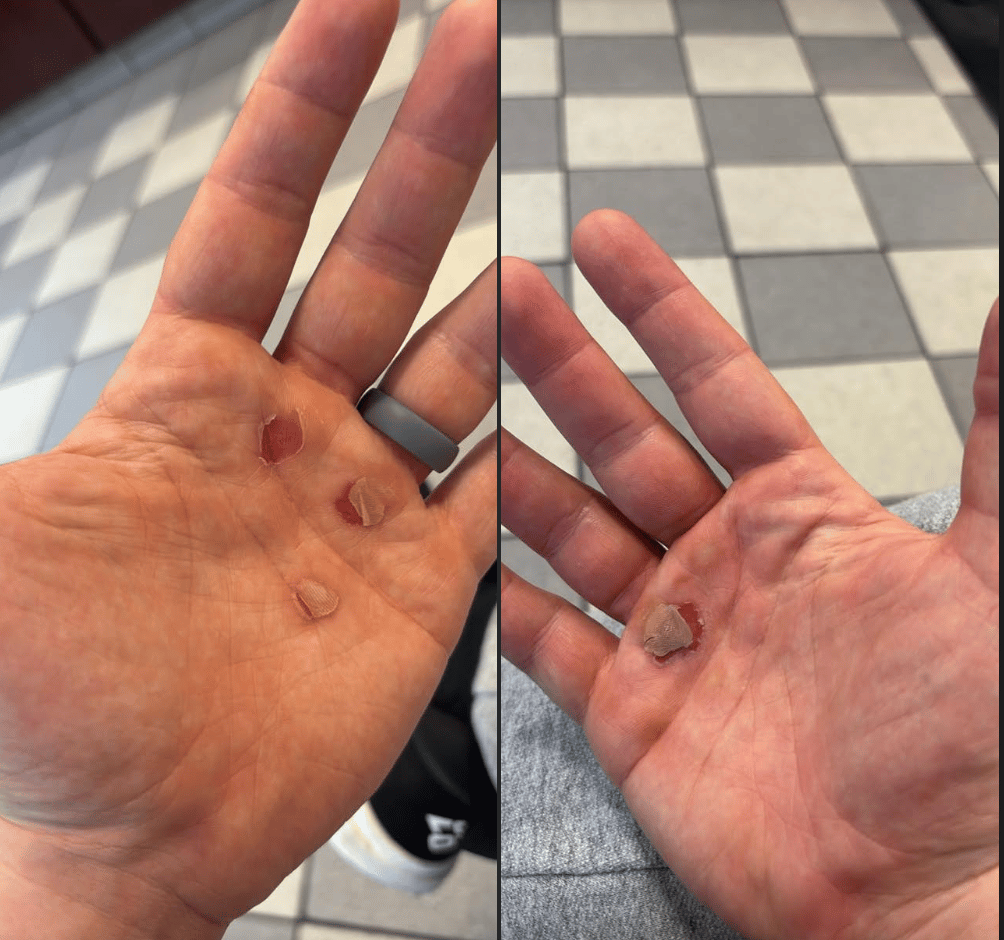
Hot metal bars do not make happy hands 👎️
Day 2 (Wednesday)
This time we all met at Somerville High School, a 15-minute walk uphill from my hotel. And by uphill, I mean I felt sometimes like if I stopped moving, I would tumble backward onto my butt 🤪 I can’t imagine biking up that hill, but I saw people do it.
But man, what a gorgeous building! My high school was maybe 1/3 the size of this one, and much less modern by the time I attended it. The school has a good relationship with PKGen Americas, so we had easy access to the many surrounding structures for movement and coaching.
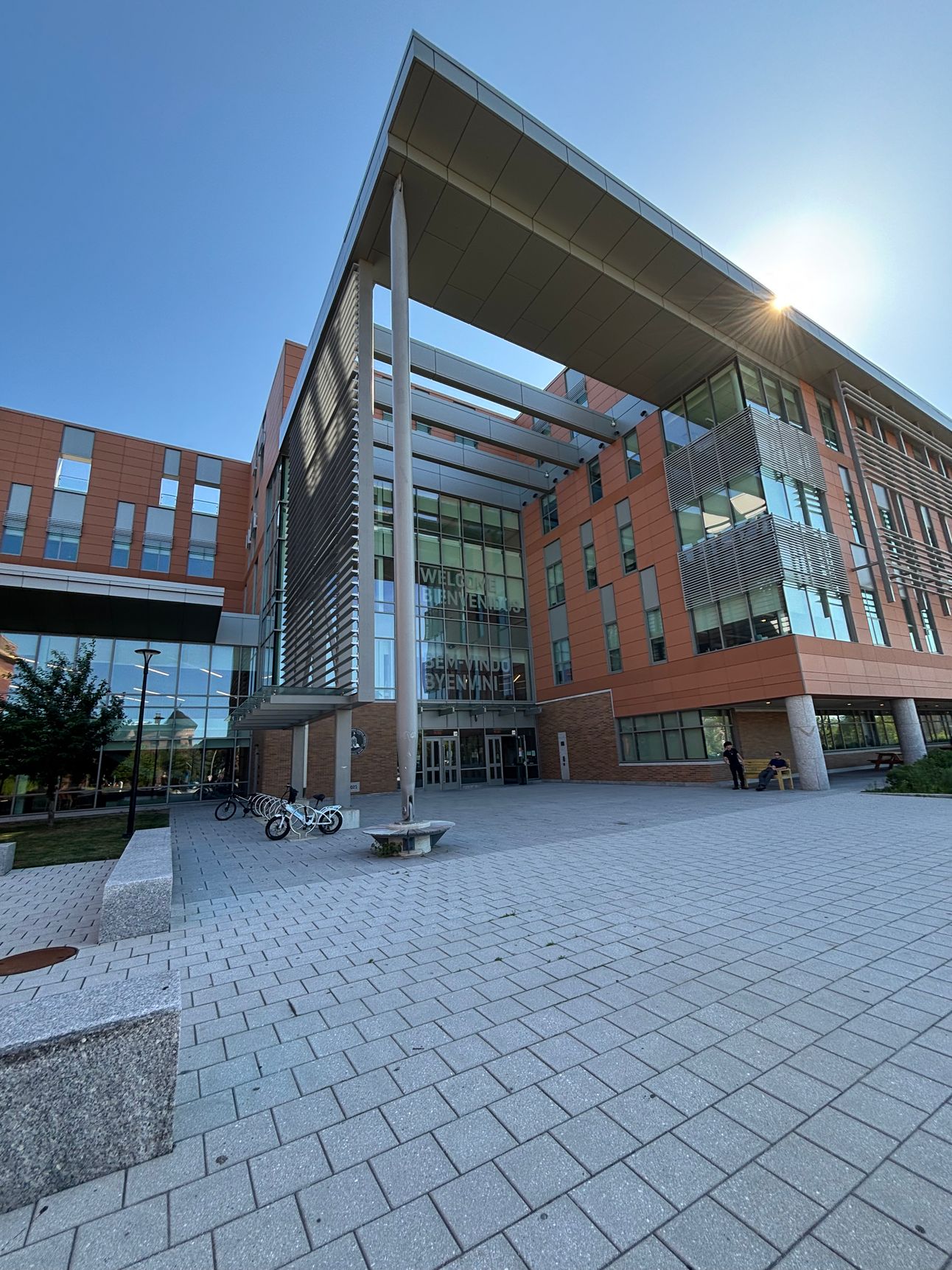
This school is seriously so massive
The discussions on Day 2 centered on coaching styles and coaching tools like modeling, chaining, and shaping. We had ample opportunities to experience these tools as a student and use them as coaches, which is typically how all the days were designed. We didn’t just absorb knowledge like sponges, we internalized it through deliberate practice.
We also dove into designing strength & conditioning programs to prepare students for parkour’s physical demands and make them stronger, well-rounded practitioners. I also got to learn more about specific biomechanics in parkour movements that I wasn’t aware of. This knowledge informed certain visual cues we can give students when teaching them movements like wallruns and precision jump landings.
At the end of the day, we had a group challenge I vividly remember both because it was hard, and because it is such a classic in the parkour community — backwards QM up a bunch of concrete stairs 😆 I was shocked I made it up as quickly as I did, but my arms were gassed by the end of it.
Highlights
“People don’t often need to be told what not to do” — an insight that came from a discussion about giving instructions and the power of brevity
Learning that, with sufficient bicep strength, the active cat hang is easier than the passive hang; also, where you place your feet on the wall differs from person to person, depending on hip mobility & center of gravity
Finding out that not everyone likes getting cheered on when they’re struggling! Often the best way to help someone is to simply be there, doing the hard work with them.
Getting a burrito at Anna’s Taquería and ice cream at Ben & Jerry’s with new friends after a long day 🌯 ❤️ 🍦

Best filling option is the pickled red onions 🧅 🥰
Day 3 (Thursday)
I got up at 6am on Day 3 because I ran out of time before bed to do the homework we’d been assigned. In retrospect, this was kinda silly because we didn’t need to turn in the homework until the last day, but I didn’t know that, and nobody asked, so most of us assumed it was due on Day 3 🤣 In any case, I got the written stuff done, but then I scrambled to get to Somerville High School at least 10 minutes early to finish scoping out the 2 jumps I wanted to try to break, since that was how the day was going to kick off.
This was one of the most valuable experiences for me, as someone who had deliberately avoided doing things that might re-injure my left knee for the past 2 years. I did manage to actually break the 2 jumps I assigned myself, which was a big surprise for me, since one of them involved doing 2 rail strides to a rail pre. Rails scare the bajeezus out of me still, since I don’t normally train on them. Admittedly, it took me a whole 15 minutes of breaking that jump down into its smallest parts to feel confident to go for the full thing. Even then, I had only broken the jump “mentally”: my technical skill was unreliable for actually sticking the landing at the end. It was still a therapeutic exercise in fear management.
We did this exercise because we will need to know how the process of breaking a jump works for us, in order to help students through breaking their own jumps from a coaching perspective. I didn’t realize that I had such a systematic way of approaching them, to be honest. Discussing everyone else’s approaches gave me a lot of clarity on how I might want to coach this, as well.
On the same note, while some contextual elements of breaking a jump can be helpful to me — like having friends nearby for emotional support — these same elements can be distracting for others. This goes along with the topic of inclusive coaching that we covered in one of our discussions: we need to be thinking about how our students might learn differently from us, or have specific learning needs that change how we approach lesson delivery.
Later in the day, we covered route-building and some of the “gotchas” that we might want to have in mind, like where the bottleneck in the route could be for lower ability levels. To finish off the day, we had a group challenge that tested our ability to communicate with each other, jump with precision, and think ahead. This is one of my favorite things about parkour: we can create puzzles out of everyday objects and turn them into team-building activities ❤️
Highlights
Relearning the “cavalier” — a movement which goes by many other names:
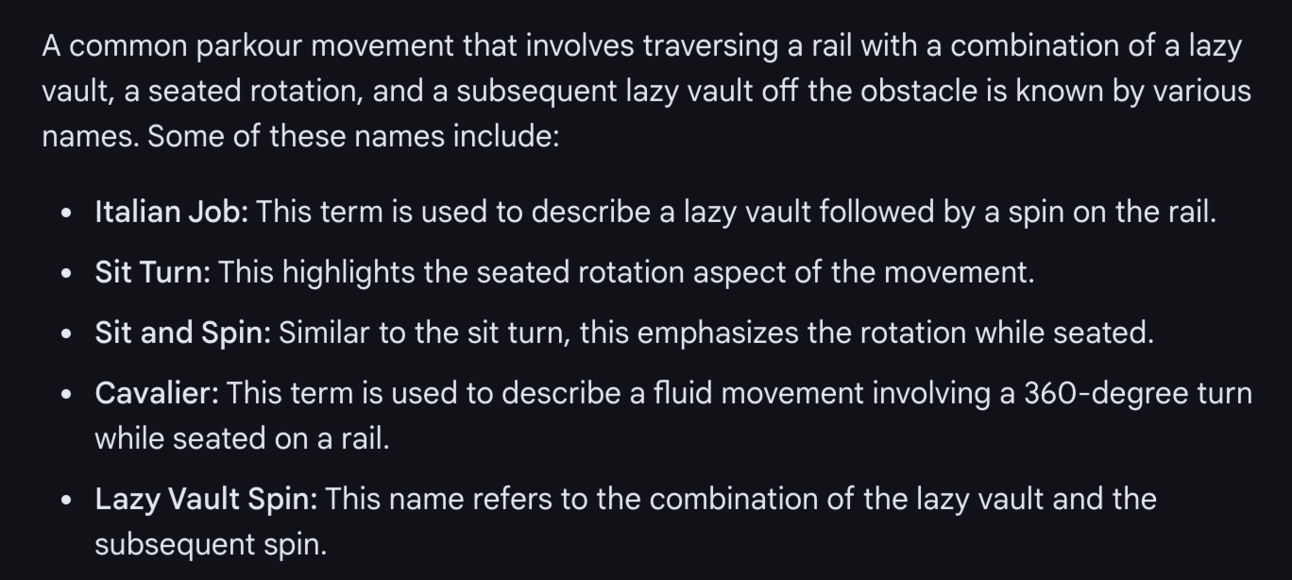
Learning that I’ve significantly underestimated what my left knee is able to handle with a proper warm-up 💪
Meeting up with an old friend from my first tech job at Fetch! 🫶 He lives over in Fenway now, so I got a quick tour of the neighborhood. We got pics in front of Fenway Park, went for tacos at a local place called Loco, and ended the night with some ice cream at Van Leeuwen’s 🍦 Boston loves its ice cream shops, apparently 😄
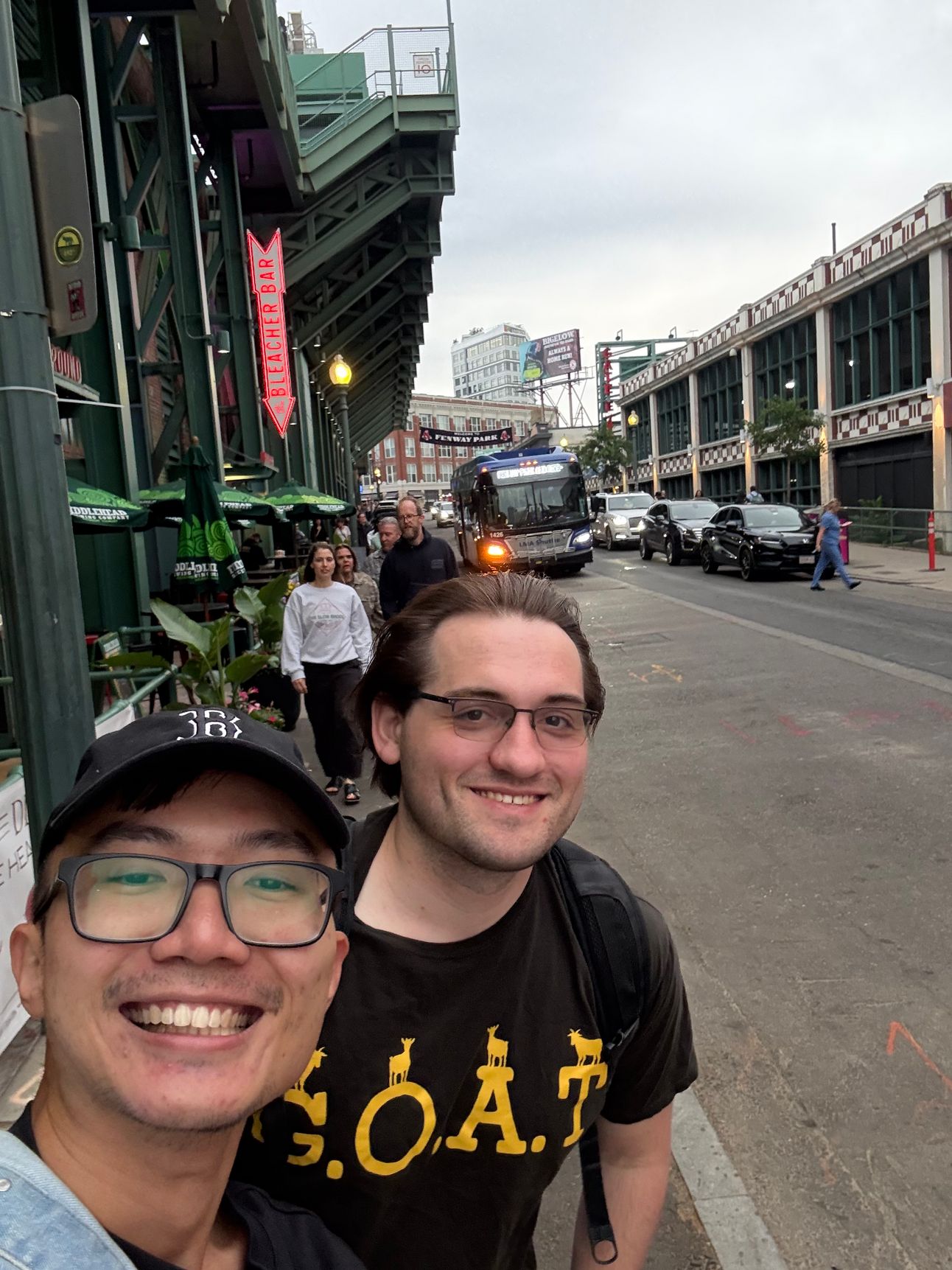
If you squint, you can see the “Welcome to Fenway Park” banner in the background
Getting some Meta Raybans footage of a route we did during a group activity 🎥
Day 4 (Friday)
We had a new meeting spot on Day 4, and this was the only day I was late – by about 5 minutes. I wasn’t the only one who had been late to arrive, or late to return from scheduled breaks throughout the day. That was something we would all come to regret later on 😉
We started off the day at Cambridge Rindge & Latin School (CRLS) discussing communication topics like cueing and understanding the nonverbal messages our students are sending us. One takeaway was that we should aim to use more external cues than internal cues, because it’s more effective for students to refer to something outside of their body when visualizing how to perform a movement.
A few more topics we touched on: coaching youth, dealing with misbehavior or defiance, and effectively utilizing assistant coaches. I have a lot of notes from these discussions, but here are a few takeaways I had:
Even though it’s “fun” (Type 2 Fun, as we call it 😛) for adult students, using exercise as punishment when coaching youth can create a negative association with exercise
Overenthusiasm can be channeled in a way that adds to the class experience, like giving the student extra responsibilities
If the assistant coach has less experience, they should be given a specific role instead of free reign. Also, when they’re not assisting, they should be a model student to set a good example
As with the other days, we finished with a group challenge, but this one was a bit different because it included a punishment for all the minutes we had arrived late that day.
22 minutes. That’s how many we wasted by being late on Day 4, as a group. So, that’s how many push-ups or squats we would do after every 4 rounds of the “pacer test”-style challenge.
I was pleasantly surprised how many push-ups I was able to crank out, and that my knee was willing to let me do well over 50 squats in addition to running the route several times. Zooming out over the week as a whole, I’m beginning to think my biggest problem was not my knee injury itself, but a lack of proper warm-ups before doing intense exercise on that knee.
Even so, I didn’t bring my water with me to the challenge, so I slowed down before everyone else. I didn’t give up, though. Even on the last round when everyone finished their 6 laps in the same time I finished the first 3, I kept going until I had done all 6 💪 There was a couple of students who wanted to support me on my last 3, and I was grateful for the company 🫶
Once the challenge was done, I decided to record the route for posterity using my Meta Raybans:
Highlights
Remembering what it feels like to do as many push-ups and squats as my body will let me do — it’s more than I thought I was capable of, for sure
Learning some of what will be on the L2 assessment. I have lots of training to do, let’s just say that 😅 But I’m confident it’s a bar I can meet.
Reprising my role as an ADAPT Level 1 assistant coach — haven’t done that since my supervised hours back in 2014 — as part of a session on utilizing assistant coaches. I’m told I was a good assistant 😁
Day 5 (Saturday)
So, I’ve been forgetting to mention this entire blog post that I was searching for a stopwatch all week.
Ever since I found out that the stopwatch was not a “nice-to-have” — we’d be held accountable for timing our “micro-teach” between 10-12 minutes — I tried every store I could find: Target, Walgreens, CVS, random convenience stores…but none of them had a stopwatch in stock.
The night before, I saw Everett’s Target had a kitchen timer in stock, so I took a Lyft there with the goal of getting there at 7am when they opened, with plenty of time to make it to the stadium.
My mistake was not double-checking that specific store’s hours and assuming it would open at 7am like the Target near me. Mostly this was because I was in a rush.
I only realized my mistake after the driver had left: the store didn’t open til 8, and I had to get to Harvard Stadium by 8:25…which was not gonna work.
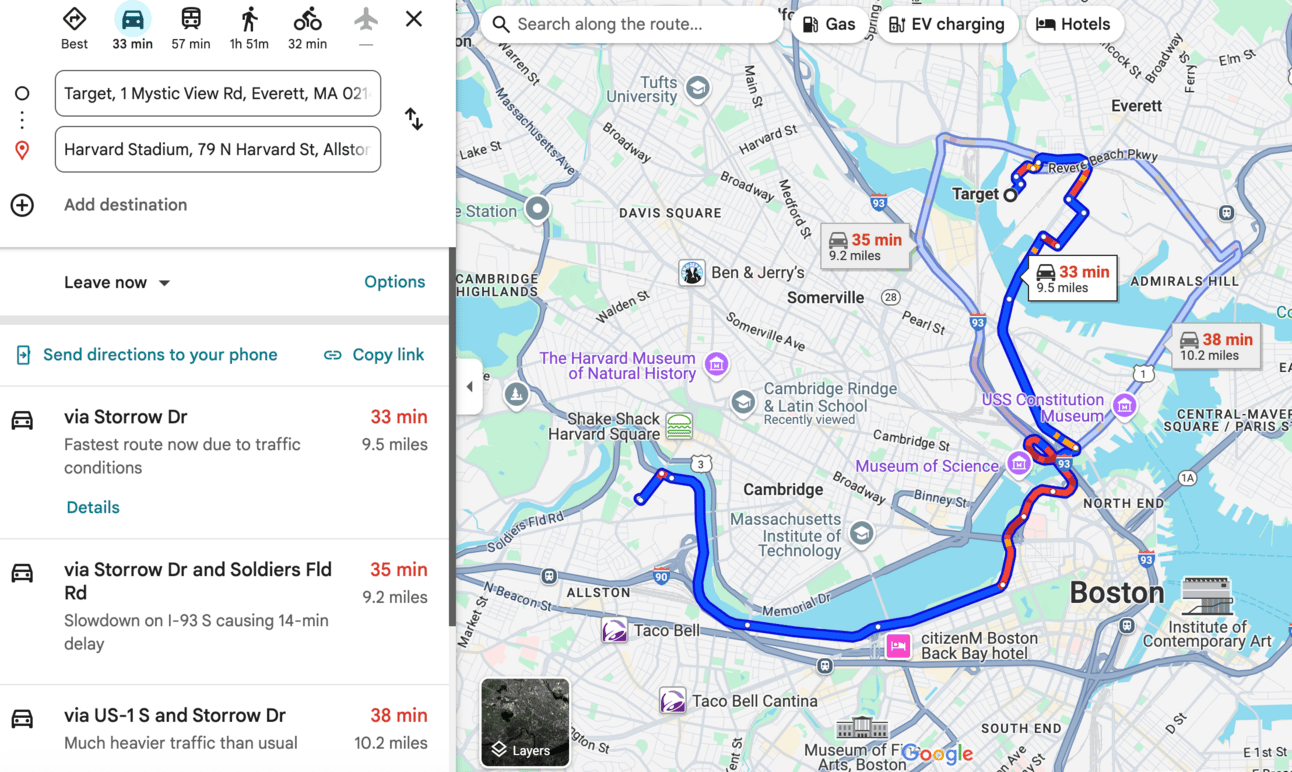
It was less than 30 minutes when I checked, but it was definitely more than 20.
I ended up taking Vanessa up on her offer to use her smart watch, and it turned out to be a lifesaver. Without it, I would’ve gone way over time, as I still managed to go a few seconds over the 12-minute limit even with the time right in front of me. I got that reassurance from her while we were waiting to start running the steps of Harvard Stadium.
Oh yeah, that was wild. I didn’t know this was a thing!
Apparently, the Harvard Stadium Run is a common workout challenge for locals and the November Project regularly hosts meetups to do it every Wednesday at 5:55am and 6:30am, rain or shine 🤯 We were in good company that day, running the stairs with many other people of all ages.
For the ADAPT L2 course, we had exactly 1 hour to get as far as we could. I managed to get from Section 37 all the way through Section 11, with only 10 sections remaining. Much farther than I thought I’d make it, that’s for sure 😅
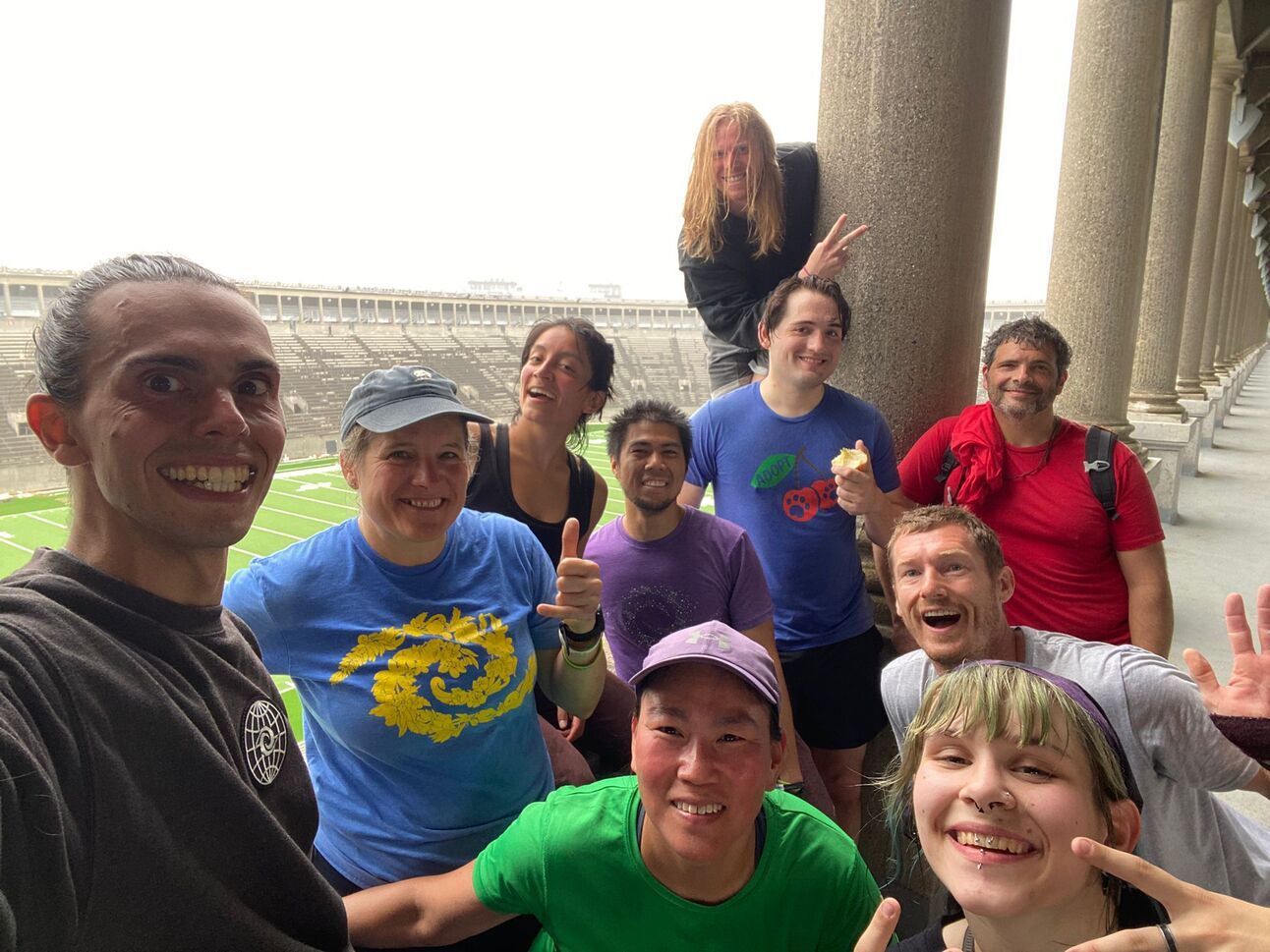
Harvard Stadium kicked ALL of our butts 😮💨
This was how we started the day, and before we left Harvard, we had a chat about the culture and history of parkour. I learned that FIG is still a problem, and that art du deplacement became a preferred name for the discipline by the founders as a way to maintain control in spite of FIG — they don’t choose to use the term “parkour” anymore since FIG has been using it.
Speaking of terminology, the term “traceur” isn’t really used much anymore, and most people prefer “practitioner” now. Thanks to being reminded of this, starting with this blog post, I renamed the blog from Door Country Traceur to Door Parkour.
Honestly it was pretty disappointing to know that the FIG thing was still a growing issue, since I hadn’t heard much about it since pre-COVID, but I guess most of that is because FIG doesn’t have as much sway in the US as it does elsewhere.

After we wrapped up the culture/history discussion, we went back to CRLS to finish out the rest of the course, which included my micro-teach. I had to scrap my original plan at the last minute because the location I chose wouldn’t be ideal in rainy conditions, and I threw together a new plan in about 10 minutes.
My micro-teach went better than I anticipated! I set up a game for everyone to practice backward movement as a way to work on spatial awareness. The biggest critique I got was that the game seemed like an example of “class parkour”. This means I didn’t teach spatial awareness within a context the students would realistically encounter out in the world.
I also had a couple of moments where I could have made the activity safer by changing where I told students to look or modifying an activity for a student who experienced too much of a challenge.
To be fair, every single student on the course had a mix of positive and negative feedback on their micro-teach, and the goal of it wasn’t to have a perfect micro-teach, but rather to learn from each other’s approaches and identify ways we can all do better.
My greatest fear was that I would freeze up mid-session or not get through the entire lesson before my time was up. None of those things happened, and I actually had some fun delivering the lesson 🥳
The rest of the day we talked about recovery, flexibility, and mobility. We stretched a lot. We did some self-reflection on our micro-teaches and our perceived strengths & weaknesses that we wrote down for ourselves on Day 1, to see if we felt differently after going through the course.
We also covered more of what would be on the assessment, and then we had our 1:1 feedback session with the tutors — well, technically 1-on-2 since there were 2 of them 😜 The feedback they gave me was the most precious thing I’ll take away from this course:
Develop a more dynamic coaching presence — don’t be afraid to be “louder” with my presence and move around more
Ensure I’m targeting my lessons to multiple ability levels — all students should feel challenged by my sessions
Trust myself to make pivots & changes mid-lesson if things aren’t working out the way I want them to
I’m good at giving clear & brief instructions, which is something I didn’t see in myself on Day 1. This was really nice to hear ❤️ They also were impressed that I showed a high degree of technical confidence on the course after taking such a long break from parkour and training only 6 months to get fully immersed again 💪
They also suggested I earnestly try to build a local parkour community to make my journey less lonely. I know they saw how much I loved being part of the community again and how important that part of the discipline is for me. I think I’ll start a local parkour meetup and see what happens, or say hi to some skaters next time I’m at the skatepark. It’s been a while since I branched out and tried to make friends where I live.
When Day 5 was over, it was surreal. I couldn’t believe we actually made it through the course. Not just me, but all of us. I know we all worked our butts off those 5 days, and we all learned something about ourselves in the process. I can’t wait to see these people again! And I probably will at next year’s American Rendezvous.

Such a great group ❤️ Couldn’t have asked for a better ADAPT L2 course experience. Til next time 🖖
Highlights
Running Harvard Stadium for the first time!
Giving my first micro-teach!
Getting feedback from Chris & Blake on my coaching ❤️
Going to a Pride celebration in Bow Market with the group after Day 5 wrapped up — we ate dinner there! I had some poutine and a burger, which were both the best food I’d ever eaten (as are all foods consumed after parkour training)
Trying my first [marshmallow] fluff cone!
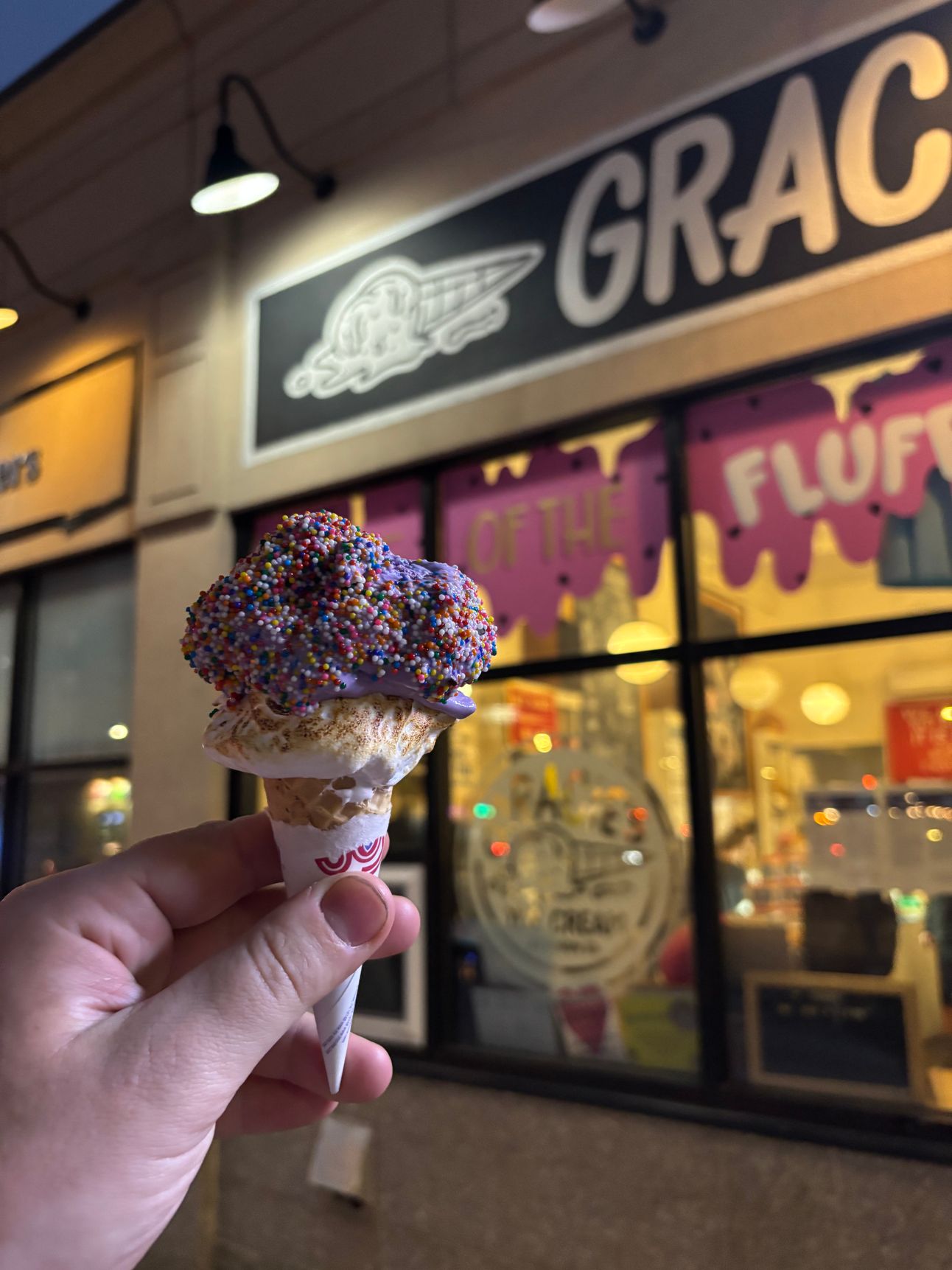
The marshmallow fluff on the cone was almost better than the ube ice cream 😍
One more class before I go (Sunday)
On Day 5, I found out about a low-impact class offered by PKGen Americas the following day up at Somerville High School. It was just early enough for me to still make my flight afterward if I hustled. So obviously I had to go!
I was impressed by how many students showed up who were older than my parents. In the 16 years I’d been doing parkour, I mostly saw the “young 20-something bro” demographic represented, and the occasional young woman at the classes and events I went to. I rarely ever got to see retirement-age participants, and this class had several!
Even though I wasn’t the target audience, I was welcomed with open arms by everyone and we had a lot of fun together ❤️ That said, an argument could be made that after being battered from the 5-day ADAPT L2 course, I had become the target audience for a low-impact class 😂
Once the class wrapped up, I didn’t have much time to chat, since hotel checkout was in 20 minutes, so I jogged back down the hill and took a 3-minute shower. Calling that Lyft was bittersweet.
Closing Thoughts
It took me forever to write this 🤣 Once I flew back on Sunday, I had a few hours to enjoy time with my wife and our 2 kitties, before going to bed and getting ready to fly out again the next morning. Thankfully I had time to sleep in or I would’ve been pretty cranky.
We went to Seattle for a K-Pop concert and I’m actually writing this last part of the blog post on the plane home, and most of the blog post was written over the last few days in the early hours of the morning before the day got going.
All I’ve gotta say is this: I’m capable of getting the Level 2 cert. I just need to get training, and I FINALLY know what I need to be doing to properly prepare for it. I’ve got 2 years to do it, and I’m gonna start on my 40 hours of reflective coaching this fall with the YMCA.
While in Seattle, I put together a draft of the program plan for the YMCA parkour class and got feedback from the program exec. Blake was kind enough to offer to review the plan when I finished it, and later on, my old friends/coaches from the Wisconsin Parkour days, Alissa Bratz and Joe Kluz, offered to look over it too! I tagged all of them on the Google Doc and I’m excited to see what they have to say about it.
So things are really in motion now! Given the fall session is coming up fast, I imagine parkour will consume a lot of my thoughts the remainder of the summer ❤️
Next update I’ll have will probably be regarding the YMCA class or a meetup I have with my Wisconsin Parkour friends. Or some third thing. But this ADAPT L2 course was a MASSIVE step forward 🥳
Reply